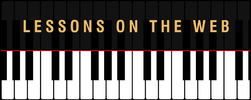|
Do you have to squint to read this blog? Screen sizes are pretty easy to adjust to our eyesight, but what about when you are reading and playing music? Do you find yourself reading notes incorrectly or missing sharps or other notations in the music? There are times that we think the mistakes that we’re making are due to our own lack of ability or development, but in fact, they could be because we’re actually having issues seeing the music. Even if you do wear glasses already, they might not be the correct setup for playing music. Think about how much closer you hold a book or magazine, or even your phone compared to the distance your music usually is from your eyes. If you’re having some difficulties in your playing and can’t seem to get them corrected, take a bit of time and think about a few things.
All of these are signs that you may need to have your vision checked! It’s actually a very simple solution to a seemingly very large challenge; mostly because we don’t consider it first, we blame our playing. Now, before you head in to get your vision checked, there is another important aspect that we need to think about that plays a part in how well we are seeing our music and even how well we’ll see it if we end up getting glasses or some type of vision enhancement lens. This other aspect is how you are sitting at your keyboard. To make sure you are able to see your music correctly you need to be sitting up straight with your core engaged so you don’t start slumping over while you are playing. We tend to do this more (slumping) as we practice longer and our focus is more on what we’re playing than how we’re sitting. In this short video I show you the proper way to sit on the piano bench or chair so that your body will be the most relaxed and you’ll be able to play the best. It will really help if you are already sitting at your piano on your bench before starting the video so you can adjust your position according to what I show you here. You’ll also be able to see your music the best and you will want to set the level your music so that it’s not too low or too high. Once you find your good posture stance, set the music so you don’t have to bend over to see it, or hunch your shoulders to read it, but so that you can maintain your set posture and easily read the music at the same time. Also notice the distance between your eyes and the sheet music. You will want to remember this distance and the level of the music to share with and eye doctor if you need to see one. When you are secure in where your music needs to be, you can then attend to your vision issues with a professional. Make sure that you tell any professional that you are a musician and you need help to see the music better. Show them how you move your head when you play and how far away from the music you expect to be most times. This will be really helpful information to find the corrective lens to meet your specific needs as a musician and not just someone who needs reader glasses or doesn’t use their eyes in the same way. If you like my tips and lessons, you will love the courses over on my website. Whether you are a beginner looking to get a solid foundation to build on or you are looking to take you existing skills to that next level, the online music courses on my website - https://www.pianolessonsontheweb.com will help you do just that. Leave a Reply. |
AuthorMost blogs written by Archives
June 2020
Categories
All
|

 RSS Feed
RSS Feed